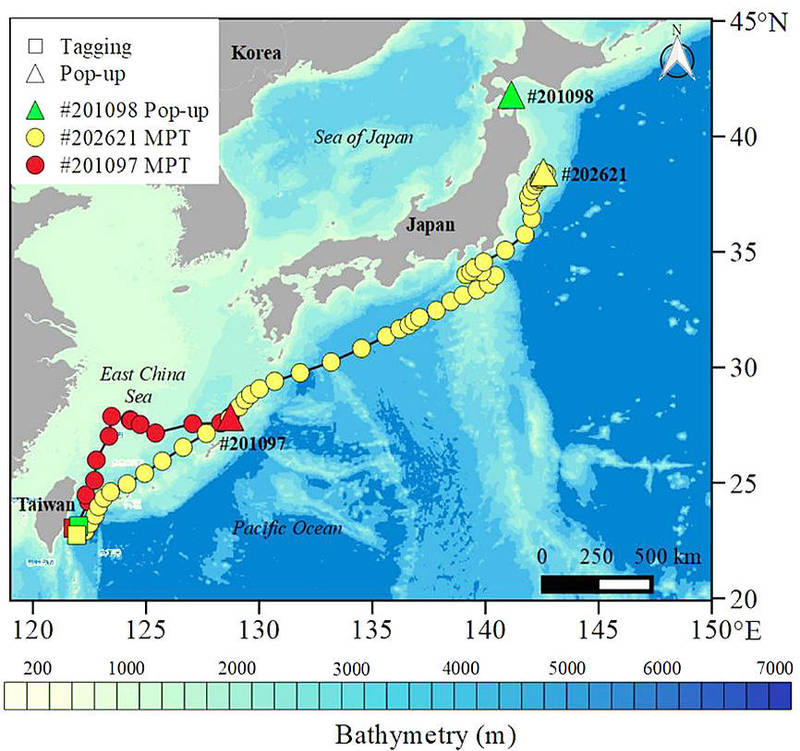《TAIPEI TIMES》Bluefin tuna tracked to Japan

An infographic shows GPS data transmitted by tags attached to three Pacific bluefin tuna that swam from eastern Taiwan to Japan’s Hokkaido island. Photo courtesy of the Fisheries Research Institute
monitoring: The fish, which can grow more than 4m long and weigh up to 700kg, were tracked for 127 days during their 3,000km journey from Taiwan to northern Japan
By Yang Yuan Ting and Jonathan Chin / Staff reporter, with staff writer
A team of Taiwanese and US researchers has conducted the first-ever study to track the spawning and migration patterns of Pacific bluefin tuna, the Fisheries Research Institute said yesterday.
The study was jointly conducted by researchers of the institute and Stanford University, the Council of Agriculture-run institute said.
Taiwan is one of the countries that harvest the Pacific bluefin, and therefore has a responsibility to conduct research that can facilitate sustainable fishing, the institute said.
Pacific bluefins — one of three species of bluefins — can live for up to 40 years, grow more than 4m long and weigh up to 700kg, the institute said.
Three adult bluefins weighing 180kg to 300kg were fitted with trackers, which enabled researchers to monitor the fish during their 3,000km transit from the waters off eastern Taiwan to the seas off northern Japan’s Hokkaido island, it said.
The devices accumulated a total recording time of 127 days and 13 hours.
The data from the trackers showed that movement and diving patterns of the Pacific bluefins differ from day to night, the institute said.
During the day, the fish swam in depths of 300m to 500m, but would rise to 200m-deep waters in the ocean’s thermocline layer during the hours of darkness, it said.
The study owes its success in part to the crew of a commercial tuna longliner registered in Taitung, which together with the researchers captured the bluefins, it said, adding that live captures require great skill.
Pacific bluefins are known for their physical strength and ability to elude fishers by struggling in and snapping fishing lines, the institute said.
The study filled an important gap in tuna research and would help regulators in the Pacific region that lack the ecological data effectively manage fisheries, it said.
Multilateral efforts to increase the Pacific bluefin tuna population have led to a rise in the number of female fish, but the species continues to display signs of being overfished, the institute said, citing the International Scientific Committee for Tuna and Tuna-Like Species in the North Pacific Ocean.
The pressure on bluefin tuna is most likely due to the harvesting of immature fish, which Taiwan does not practice, the institute said.
新聞來源:TAIPEI TIMES




















